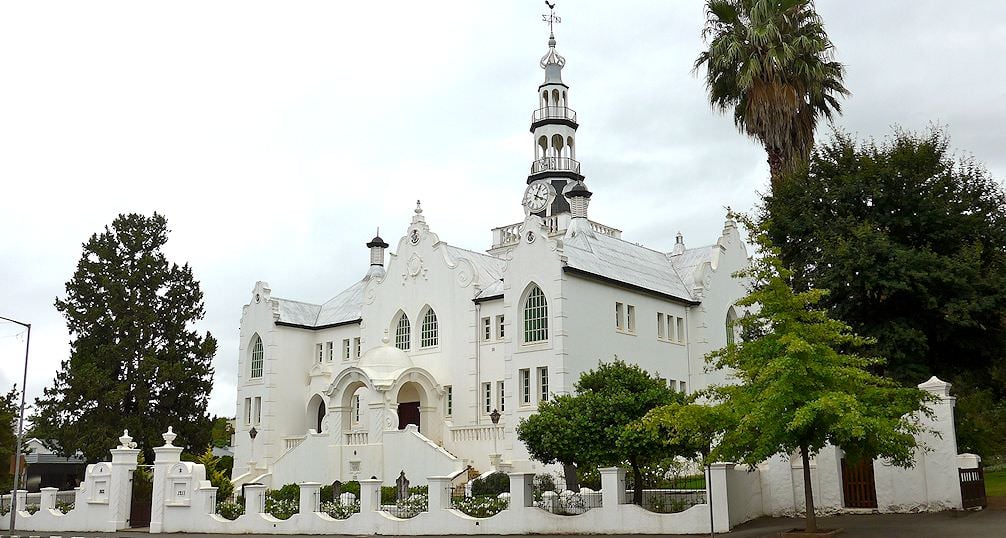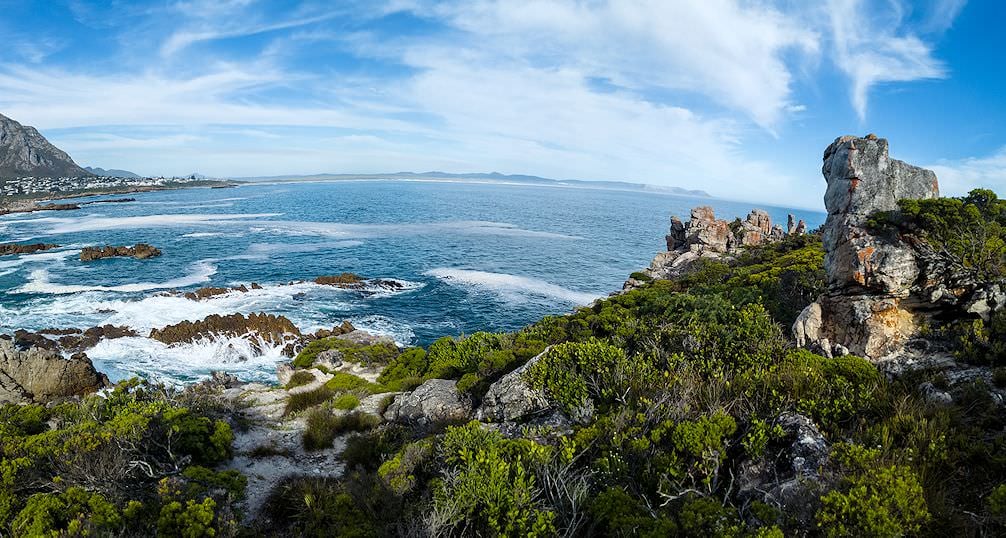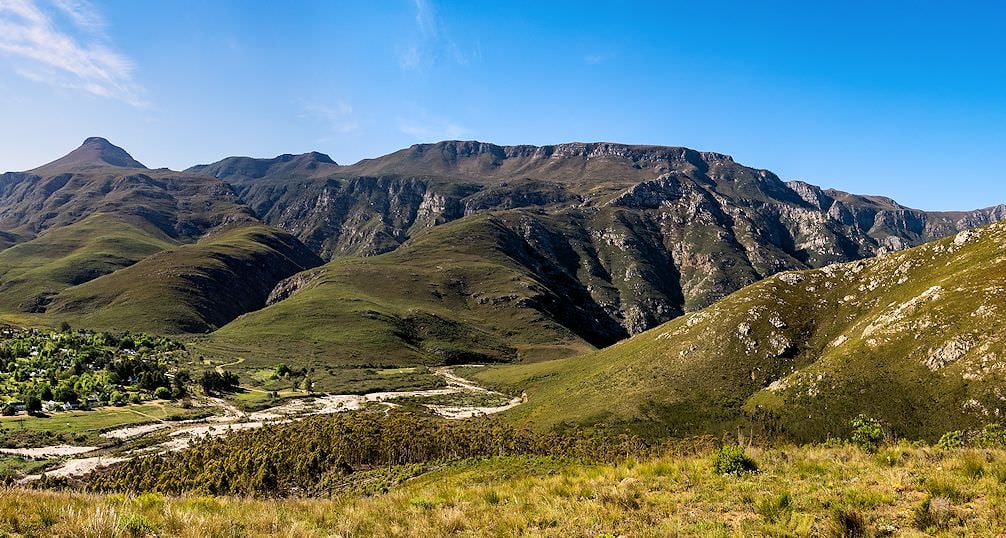- USD
- EUR
- GBP
- AUD
- CAD
- ZAR

Upon touring through the vast rolling hills and mountain silhouettes of the Overberg region of the Western Cape, I discovered the true depth of South Africa’s natural heritage.
The Langeberg mountains stretch as far as the eye can see. The quant town of Swellendam is the ideal base for exploring the region, and is home to a number of architectural gems, many dating back to the early days of the Cape Colony and its first native born governor Hendrik Swellengrebel after whom the town is named.

The town’s main street is lined with streetlights bearing the family crests of the families that have called the town home, with a diverse mix of ancestries that include local Khoi herdsmen, Dutch, Scottish, Irish and French. Many wonderful restaurants, craft shops, boutiques and a museum or two can be found within the whitewashed walls of the town’s buildings, and the Swellendam ‘Mother Church’, a Dutch Reformed Church dating back to 1798.
The town was briefly the capital of the Swellendam Boer Republic, a pre-cursor to the ‘Great Trek’ by the Afrikaner settlers in the 19th century - for those interested in the region’s history and its role in the history of South Africa - and this history is still told at the Drostdy Museum in the town.

Although the region is abuzz with agricultural activity, a few key nature reserves have helped preserve the iconic fynbos and renosterveld negation of the area. Bontebok National Park, the smallest of its kind in South Africa, was an emergency measure to help save the last seventeen of the endemic Bontebok in existence from extinction when it was established in 1939. Since then, the species has recovered dramatically and now calls many of the nature reserves and national parks in the Province home. One such a reserve is the De Hoop Nature Reserve just 45 minutes drive from the town of Swellendam. This gorgeous coastal reserve is overflowing with fynbos shrubs, restios and proteas, with over 1500 plant species reportedly found within its borders. The reserve is predator-free and therefor a favorite among cyclists, with beautiful trails to explore the ancient landscape.
For hiking, one need look no further than Marloth Nature Reserve bordering Swellendam. The story of the reserve goes that Rudolph Marloth, a botanist of the late 19th and early 20th century, petitioned the British Crown to declare the area a nature reserve due to its pristine natural beauty, and so the reserve bearing his name was born.
The hiking trails here lead into the foothills of the Langeberg Mountains and offer spectacular views of the town of Swellendam and the greater Overberg below.
Finally, for die hard conservation enthusiasts there is the Haarwegskloof Renosterveld Reserve. Renosterveld, translated as ‘Rhino veld’, is a vegetation type within the broader Cape Floral Kingdom categorized by specific types of wildflowers and shrubs, and is considered endangered. Haarwegskloof was established by the Overberg Renosterveld Conservation Trust and the WWF to protect what is now the ‘largest contiguous stretch of remnant lowland Renosterveld remaining on Earth’. Those looking to explore rare lilies, bulbs and shrubs would enjoy a trip to their visitor center, and perhaps even go on a guided tour within the reserve.

Route 62 is a particularly scenic route through parts of the Langeberg Mountains and Little Karoo, and is notable for its beautiful cliffs, streams and idyllic towns. Montagu, a short drive from Swellendam, is perhaps the jewel of Route 62. The town is famous in South Africa for the well known brand of dried fruits, dried meats and nuts that bear its name. Dried peaches are the traditional treat produced here, though the craft has expanded to include new, interesting creations over the years. The town’s wine cellars, restaurants and craft shops are a wonderful way to spend a day, relax and enjoy, with museums and art galleries among the Cape Dutch Styled buildings. Swellendam, as mentioned, is equally noteworthy for its hospitality, and so the combined variety of the area means visitors are inevitably spoiled for choice.
Veering out of town brings you to the open road of Route 62, Tradouw Pass, Remhoogte Pass, and Route 60, just some of the spectacular roads in the area.
Tradouw Pass is especially scenic for its view of the rocky valleys high up in the Langeberg mountains, where motorists can stop, take pictures and enjoy a drink before continuing on the well-maintained, winding mountain roads.
From Montagu, the Cogmanskloof Pass is the one to try and again there are spots to stop, explore and even barbecue, looking out over the towering rocky slopes - a more peaceful afternoon there never was.